- Sierra Leadership
Executive coaching and leadership development
- Eric Nitzberg
- Search for:

Four Elements of a Great Presentation

The longer I’m in the coaching business, the more I realize how helpful it can be to break a skill or behavior down into its component parts. There’s something about knowing what the ingredients are—the recipe, if you will—that makes it easier to learn or improve a behavior.
Several years ago a colleague and I developed a model that breaks presentation skills down into 4 main areas. Most people are naturally good in some areas, and need to develop in others. Whether you are coaching someone on their presentation, or working on your own, I encourage you to think in terms of these four elements:
Content and slides. The content of a presentation consists of the speaker’s words. It’s the “script”. This includes the key ideas, overall structure and flow of the presentation (introduction, middle and end), word choice, use of stories, analogies, metaphors, humor, and other rhetorical devices. Content is the foundation of a great presentation, because no matter how excellent the delivery people don’t really want to listen if you don’t have something important and engaging to talk about.
Some presentations also use slides or another form of media (audio, video), or props, to support the speaker’s message. Media can help add power and impact to a presentation, but as I often say to speakers, remember that the slides are not the presentation, you are the presentation. In some cases slides become a crutch, a distraction and a hinderance. In recent years some organizations have banned or restricted the use of slides.
Body language. Our bodies are one of the chief tools we use in presentations and for communication in general. Human beings are hard wired to respond to each others’ body language. So are other animals, in fact. If you want to see how primal body language is, watch a dog. We used to have a dog who, after stealing food from the table or engaging in other unapproved activities, would put her head down with ears flopped forward in a posture of unmistakable apology (that was our unscientific interpretation). But it’s the same with people. Posture, eye contact, movement–they all communicate a great deal about what we are thinking or feeling.
Standing tall, making connecting eye-contact and moving with purpose can go a long way towards conveying confidence. Being more intentional about body language can do a lot to impact how you are perceived, but also has added benefit of impacting your thinking and feeling from the outside-in, as is famously pointed out in a TED talk by Amy Cuddy .
Voice. Although our voices are produced by our bodies, usually I think of voice and body language as discrete, in part because just like body language, the human voice conveys a whole universe of information. The speed, inflection, pitch, pacing, volume and use of pauses in a speaker’s voice can convey tremendous nuance. Generally, speakers are more engaging when they include some variety in the inflection and timing of their voice, and when they avoid extremes of speed and volume.
To get a sense of the power of voice, watch a good movie or TV show and pay attention only to the actors’ voices. Great actors—and great presenters—use the full range of subtleties in their voices to engage their audiences and convey feeling and information.
Authenticity. Authenticity is about how self-aware a speaker is about what’s truly important to them, and how transparently they communicate those interior truths. Authenticity is conveyed through content, body and voice but I have broken it out as a separate category because it is so foundationally important to building trust with an audience. And trust is, of course, the foundation of any relationship. I emphasize this because all presentations involve a relationship between a speaker and their audience. One of the most frequent tips I give speakers is to stop thinking of their presentation as a performance, and instead think of it as a conversation, a relationship with the audience.
A key path to improving your presentation skills
One great exercise to help you develop your skills as a speaker is to assess other speakers you see in terms of these 4 elements. Whether you are watching a TED talk, a colleague, or an actor, pay close attention to each of the elements. What works or doesn’t work about their content, body language, and voice? Pick one of the 4 elements and pay attention to it alone. Do they seem authentic to you, and if so why? Is it because they are talking about something that’s truly important to them? Is it because they have taken a risk in disclosing something personal?
The better you understand each of these domains, the more fluent you are in observing them and talking about them, the more easily you can improve your own presentation skills, and help others.
- Onsite training
3,000,000+ delegates
15,000+ clients
1,000+ locations
- KnowledgePass
- Log a ticket
01344203999 Available 24/7

Key Elements of Presentation to Make it Impactful
Wondering what the Key Elements of Presentation are? These elements include clear structure, engaging visuals, effective delivery, and audience interaction. In this blog, we’ll explore how mastering these can lead to a powerful and memorable presentation. Dive in to elevate your skills and develop a strong understanding!

Exclusive 40% OFF
Training Outcomes Within Your Budget!
We ensure quality, budget-alignment, and timely delivery by our expert instructors.
Share this Resource
- Effective Communication Skills
- Presenting with Impact Training
- Interpersonal Skills Training Course
- Effective Presentation Skills & Techniques
- Public Speaking Course

Picture this: You’re at a conference, and the speaker begins with a powerful anecdote about overcoming a significant challenge. Instantly, the room is captivated. What makes this presentation stand out? The solution lies in the Key Elements of Presentation.
Have you ever noticed how some talks leave you inspired while others are quickly forgotten? The difference is in mastering these elements. By focusing on the Key Elements of Presentation, you can elevate your delivery. Dive into this blog to discover the strategies that will help you make a lasting impression on your audience.
Table of Contents
1) Importance of a Good Presentation
2) Key Elements of a Captivating Presentation
a) Understanding Your Audience
b) Crafting a Compelling Introduction
c) Developing a Well-structured Main Content
d) Maintaining an Engaging Delivery
e) Handling Q&A Sessions
3) Conclusion
Importance of a Good Presentation
A good presentation is crucial in various aspects of life, from academics and business to personal interactions. Delivering an impactful presentation is a valuable skill that can lead to numerous benefits in professional settings. A well-crafted presentation can captivate and engage the audience through effective storytelling techniques, visual aids, and clear organisation, maintaining the listeners’ attention throughout.
Moreover, a good presentation enhances credibility and professionalism. When a presenter delivers their content with confidence and clarity, it leaves a positive impression on the audience, fostering trust in their expertise. A successful presentation can influence decision-making processes, whether persuading stakeholders, convincing investors, or inspiring action. Additionally, a compelling presentation creates a memorable experience for the audience, making the content more impactful and lasting.

Key Elements of a Captivating Presentation
Delivering a captivating presentation goes beyond merely sharing information; it involves planning meticulously various components such as Starting a presentation engage, inform, and inspire your audience. From understanding your listeners to crafting a compelling introduction, here are some elements that can make your presentation a memorable one. To Prepare a Presentation effectively, consider the following key steps
1) Understanding Your Audience
Before embarking on the introduction of any presentation, it's of utmost importance to have a profound knowledge of your target audience. Take the time to conduct thorough research, delving into their hobbies, information tiers, and expectancies. Knowing your target market and their alternatives permits you to tailor your content in a way that resonates with them on a deeper stage.
A customised method ensures that your presentation isn't only engaging but additionally relevant to their needs and desires. Remember, a presentation that speaks immediately to your target audience has the potential to captivate and depart an enduring effect on their minds.
2) Crafting a Compelling Introduction
The significance of a well-crafted introduction cannot be overstated. It serves as the gateway to your entire presentation, setting the tone for what lies ahead. To immediately capture your audience's attention, kick off with a powerful hook or an enthralling anecdote that piques their curiosity. This initial engagement is crucial for holding their interest throughout the presentation.
In addition to the hook, simply state the intent of your presentation. Let your target market recognise what they can anticipate to analyse, benefit, or experience through investing their time for your communication. By putting clean expectations, you no longer only hold them targeted however additionally instill a sense of anticipation.
Remember, an impactful introduction is a bridge that engages you with your target audience and creates an environment of receptivity. Take the time to craft it thoughtfully, and you will lay the inspiration for a successful and captivating presentation.
Learn to create mesmerising presentations with our course in Presentation Skills Training !
3) Developing a Well-structured Main Content
Crafting compelling main content is the backbone of an impactful presentation. To achieve this, follow these key steps:
1) Create Clear Sections and Subheadings: Divide your main content into distinct sections, each dedicated to addressing a specific point related to your topic. Within these sections, utilise different headings, such as H2 and H3, to separate the main topic from the subtopics.

It will let you break down complex information into digestible portions. This structuring technique allows your audience to follow the flow of your presentation seamlessly, enhancing their understanding and retention of the content.
2) Use Visuals Effectively: Visual aids play a vital role in enhancing your presentation's effectiveness. Incorporate relevant images, charts, and graphs that complement your narrative and support your key points. Visuals not only add clarity to your message but also make your presentation visually appealing, capturing your audience's attention and reinforcing their engagement.
3) Tell Stories and use Real-life Examples: Human beings are naturally drawn to stories. Incorporate anecdotes and real-life examples that resonate with your message. Personal experiences and relatable scenarios create a powerful emotional connection with your audience, making your content more memorable and impactful.
4) Data and Statistics: Credibility is crucial in any presentation. Back up your points with credible data and statistics from reliable sources. This adds an element of authority to your Presentation Skills, strengthening your arguments and supporting your key messages.
Revolutionise your approach to education – join our Blended Learning Essentials Course now!
Maintaining an Engaging Delivery
An engaging delivery is a bridge that connects you with your audience, ensuring your message resonates powerfully. To achieve this, focus on the following aspects:
1) Speak Confidently and Clearly: Confidence is contagious, and it begins with practice. Rehearse your presentation multiple times to boost your confidence in delivering the content.

When on stage, speak clearly and enunciate each word, ensuring that everyone in the audience can understand you. Avoid rushing through your words; instead, maintain an appropriate pace that allows your audience to absorb the information.
2) Maintain eye Contact: Engage your audience by making direct eye contact. This simple act promotes a sense of intimacy and involvement, making your audience feel acknowledged and valued. Regular eye contact also keeps their attention focused on you, preventing distractions and ensuring that your message reaches them effectively.
3) Use Gestures and Body Language: Nonverbal communication is a potent tool for emphasising key points and adding dynamism to your presentation. Incorporate appropriate gestures that align with your content, reinforcing your words. Expressive body language conveys enthusiasm and passion, making your delivery more compelling and captivating for your audience.
Handling Q&A Sessions
Query sessions are an invaluable element of any presentation, providing an opportunity for interactive engagement with your audience. To navigate these sessions effectively, consider the following tips:
1) Prepare for potential questions: Anticipate the type of questions your audience may ask based on your presentation's content. Take the time to research and rehearse possible responses, ensuring you are well-equipped to address various inquiries.
2) Address With Confidence: When the questions start pouring in, respond with confidence and composure. If you know the answer, provide it succinctly. If you are unsure, be honest about not having an immediate answer.
3) Promise to Follow up: If you encounter a question that requires further research or information, acknowledge it openly. Promise to follow up with the necessary details after the presentation. This highlights your commitment to providing accurate and comprehensive answers.
Learn to engage with your audience with our Presentation Skills Courses!
Conclusion
Incorporating the Key Elements of Presentation can transform your communication skills and create a major impact on your audience. Choices like understanding your audience, crafting a compelling introduction, delivering engaging content and gracefully handling Q&A sessions can Improve Your Presentation Skills empower you to deliver a presentation that truly resonates.
Learn to deliver impactful presentations with our Presenting With Impact Training !
Frequently Asked Questions
A drawback of a presentation is that it can become monotonous if overloaded with text or data, leading to disengaged audiences. Additionally, poor design, lack of clarity, or technical issues can undermine the effectiveness of the message.
The 777 rule in presentations refers to using a maximum of 7 lines of text per slide, with each line containing no more than 7 words, and using only 7 slides.
The Knowledge Academy takes global learning to new heights, offering over 30,000 online courses across 490+ locations in 220 countries. This expansive reach ensures accessibility and convenience for learners worldwide.
Alongside our diverse Online Course Catalogue, encompassing 19 major categories, we go the extra mile by providing a plethora of free educational Online Resources like News updates, Blogs , videos, webinars, and interview questions. Tailoring learning experiences further, professionals can maximise value with customisable Course Bundles of TKA .
The Knowledge Academy’s Knowledge Pass , a prepaid voucher, adds another layer of flexibility, allowing course bookings over a 12-month period. Join us on a journey where education knows no bounds.
The Knowledge Academy offers various Presentation Skills Courses , including the Presentation Skills Training, Business Writing Course, and Data Analysis Skills Course. These courses cater to different skill levels, providing comprehensive insights into Blended Learning methodologies.
Our Business Skills Blogs cover a range of topics related to Presentation Elements, offering valuable resources, best practices, and industry insights. Whether you are a beginner or looking to advance your Business skills, The Knowledge Academy's diverse courses and informative blogs have got you covered.
Upcoming Business Skills Resources Batches & Dates
Fri 3rd Jan 2025
Fri 7th Mar 2025
Fri 2nd May 2025
Fri 4th Jul 2025
Fri 5th Sep 2025
Fri 7th Nov 2025
Get A Quote
WHO WILL BE FUNDING THE COURSE?
My employer
By submitting your details you agree to be contacted in order to respond to your enquiry
- Business Analysis
- Lean Six Sigma Certification
Share this course
Biggest christmas sale.

We cannot process your enquiry without contacting you, please tick to confirm your consent to us for contacting you about your enquiry.
By submitting your details you agree to be contacted in order to respond to your enquiry.
We may not have the course you’re looking for. If you enquire or give us a call on 01344203999 and speak to our training experts, we may still be able to help with your training requirements.
Or select from our popular topics
- ITIL® Certification
- Scrum Certification
- ISO 9001 Certification
- Change Management Certification
- Microsoft Azure Certification
- Microsoft Excel Courses
- Explore more courses
Press esc to close
Fill out your contact details below and our training experts will be in touch.
Fill out your contact details below
Thank you for your enquiry!
One of our training experts will be in touch shortly to go over your training requirements.
Back to Course Information
Fill out your contact details below so we can get in touch with you regarding your training requirements.
* WHO WILL BE FUNDING THE COURSE?
Preferred Contact Method
No preference
Back to course information
Fill out your training details below
Fill out your training details below so we have a better idea of what your training requirements are.
HOW MANY DELEGATES NEED TRAINING?
HOW DO YOU WANT THE COURSE DELIVERED?
Online Instructor-led
Online Self-paced
WHEN WOULD YOU LIKE TO TAKE THIS COURSE?
Next 2 - 4 months
WHAT IS YOUR REASON FOR ENQUIRING?
Looking for some information
Looking for a discount
I want to book but have questions
One of our training experts will be in touch shortly to go overy your training requirements.
Your privacy & cookies!
Like many websites we use cookies. We care about your data and experience, so to give you the best possible experience using our site, we store a very limited amount of your data. Continuing to use this site or clicking “Accept & close” means that you agree to our use of cookies. Learn more about our privacy policy and cookie policy cookie policy .
We use cookies that are essential for our site to work. Please visit our cookie policy for more information. To accept all cookies click 'Accept & close'.

The 4 Keys to Great Presentations For Business Or Other
- Chetan Saiya
- February 26, 2017

Table of Contents
Create video rich presentation faster with customshow.
What makes a GREAT presentation? We’ve all seen presentations and they run the gamut from good to bad to ugly. But what goes into making a presentation GREAT? Is it the design? The content? The structure? The speaker? Let’s find out the 4 keys to great presentations for businesses.
I’d like to suggest that it’s all of those things and go even further to say that a great presentation needs all 4 key elements to be great . Just having one or two or even three of these elements is nice, but for a presentation to be GREAT, you need all 4 key elements: Content, Design, Structure and Delivery.
At CustomShow We’ve been building and delivering presentations for over a decade and at Sales Graphics for 40 years before that, so we’ve seen our share of presentations.
We’ve also seen and heard experts talk about the various elements that go into dynamic presentations and their relative merits, and we’ve learned a lot from the presenters we’ve worked with over the years. What we’ve learned is about building a GREAT presentation isn’t easy, but it can be broken down into 4 understandable elements. And once you understand the elements, the building becomes a lot easier.
The 4 Keys to GREAT Presentations:

Content: Every presentation needs to start with the right content.
- First, have a clear message. Make sure you know what you’re trying to say, whether it’s convincing a sales prospect of the value of your product or service, a trainee of the value of learning a process or skill, an audience of the importance of your cause or an investor in the value of your idea.
- Second, support your message with the best fonts for presentation , facts, and NPS tools . Facts can be data, NPS survey results, testimonials, photographs, or personal experience. Supporting your message gives you credibility and engages the audience on a deeper level, silencing that little voice in their heads that questions bald statements.
- Finally, curate your content. Make sure you only use what you need, what’s relevant, and what you can support. For that, you can hire any content marketing . Too much information is worse than too little. Better to engage your audience and leave them with questions than to bore or overload them so they tune out. If you have lots of data, pick the most compelling or most relevant. If you have a great personal story, whittle it down to its essentials so you can tell it concisely. Know more about What do you Need to Think Before Designing the Presentation .
Design: Everything is designed for clarity and consistency.
- With presentation design, there is often confusion between beautiful design and effective design. While beautiful design is nice to have, it’s not essential to a creative presentation . Effective design is essential. Effective design makes your content clear, leads viewers along the path of your argument or story and reinforces your brand . Effective design looks great, but you don’t need to be an artist to create it. You just need to have a clear idea of your message, your audience and your delivery. Here are some presentation examples for your next presentation
- Just as you need to curate your content, you need to curate your visuals . Too much visual information is just as bad as too much data or a story that goes on and on. Eliminate any visual elements that don’t reinforce your message.
- Using the right tool to design your presentation is also a critical aspect that cannot be missed out on. The right tool presentation tool will help you create amazing visuals that will keep your audience engaged with the presentation. CustomShow is a presentation design tool that empowers you to create presentations that nobody has seen before. Check out the Sample CustomShow presentation to know more.
Structure: Everything is in its place, both in the presentation and out.
- Presentations are stories told in time, and as such they need to have a beginning, middle end. Just the fact that you start your presentation, talk for a while and then finish doesn’t count as structure, however. The work of curating and supporting your content and design elements will give you a clearer idea of how best to structure your story, and there are lots of valuable resources out there to help with picking a narrative structure.
- Does the narrative speak to the experience of this audience?
- Is the call-to-action targeted to this particular audience’s needs?
- Are the data, demos, products, competitive sets, or case studies targeted for the objectives of today’s meeting instead of yesterday’s or tomorrow’s?
- The structure can also apply to your entire Library of presentation materials. If you’ve been giving any type of presentation for a while, or your company has a shared drive full of presentations, there’s a lot of available content for you to work with. The question is whether you can find valuable and appropriate content for the presentation branding you’re working on. Applying the idea of structure and organization to not just your presentation but to your Library of previous presentations and presentation materials can be just as important as structuring your information within your presentation. Being able to efficiently find what you need and know that it’s accurate and up-to-date will make you a more effective presenter. Read more How Snackable Content Helps Sales Teams
Delivery: It doesn’t mean a thing if it ain’t got that swing.

- All your great work on content, design and structure doesn’t mean a thing if no one sees it. Presentations aren’t merely documents or files; they are an experience shared between a presenter and their audience. A great presentation is only as good as the delivery, both by the presenter and by the presentation technology. Whether presenting in a boardroom, off an iPad, over the Web or as a print-out, the right delivery is the difference between a great presentation and, at best, a missed opportunity and, at worst, a presentation disaster. All the other elements don’t matter if the delivery doesn’t work.
- Delivery refers to how the Presenter delivers the presentation. Skills are necessary for anyone who plans on making a living from presentations or whose business depends on giving effective presentations. We’ve worked with a wide range of presentation coaches and read a lot on the subject, and taking the time to find out more about your presentation skills and how they can be improved will always return results.
- But just as important as the Presenter’s skills is the platform and technology you use to deliver your presentation. The tool you use to deliver your presentation is one of the most overlooked elements of a presentation.
- Here once again selecting the right presentation tool becomes a important as it is the sole thing that help you deliver the presentation. In early days PowerPoint used to be the go to tool for presentation. But today there are free presentation tool that offer more features and benefits than PowerPoint. Read more 10 Free Presentation Software Alternatives
- You can learn more about The Importance of Deliver
These are our 4 Keys to GREAT Presentations , and we’ve seen that only having a few of them doesn’t work. If you just have great content you have a great spreadsheet, but you don’t have a presentation. If you only have an excellent design, you have some nice art, but you don’t have a presentation. Putting it all together is what makes it a presentation.
Every good presentation is a good presentation builder that fits the intricacies and identity of your organization. At CustomShow, we believe our presentation software can do just that.
Discover how to elevate your presentation for free
On CustomShow you can elevate your existing presentation by simply importing the PPTx file and replacing static images with videos, helping you create Dynamic Presentations.
Try out CustomShow for free
This is the heading
Meet with our sales team, our sales team can work with you to understand and tailor customshow to work for your business needs..

What is a Presentation? Objectives, Elements, Important skills, Four Ps
- Post last modified: 4 June 2023
- Reading time: 19 mins read
- Post category: Business Communication

What is a Presentation?
A presentation communicates a message, an idea or information to a group. It is similar to a report, but with a key difference–the human element. A presentation conveys the speaker’s personality and enables immediate interaction among all participants.
Table of Content
- 1 What is a Presentation?
- 2.1 To Inform
- 2.2 To Train
- 2.3 To Persuade
- 2.4 To Motivate
- 2.5 To Entertain
- 3 Main Elements of Presentation
- 4.1 Analytical ability
- 4.2 Effective communication ability
- 4.3 Creative ability
- 4.4 Good interpersonal skill
- 4.5 Sound time management
- 4.6 Problem-solving ability
- 4.7 A sense of humour
- 5 Evaluation Wheel
- 6.1 Prepare
- 6.2 Practice
- 6.3 Present
- 7.1 Know Yourself
- 7.2 Know Your Material
- 7.3 Know Your Purpose
- 7.4 Know Your Audience
Objectives of Presentation
The main objectives of a presentation are:
To Persuade
To motivate, to entertain.
A presentation is created to convey some information to a group of people. For example, a presentation may display an organisation’s quarterly performance.
Most training programmes in organisations are done through the presentation mode. Such instructional presentations convey a lot of information and are created with instructional design principles to keep the audience engaged for a long period.
Some presentations are used to convince a group of people to accept a particular idea and/or make a certain choice.
The growing popularity of TED Talks indicates how a presentation can be a powerful motivation tool. These presentations trigger emotions and inspire people to act.
Presentations can also be used to celebrate an event. For example, a farewell presentation of a colleague can be used to narrate the story of his/her overall tenure, experiences and achievement in the organisation.
Main Elements of Presentation
A presentation is said to be effective if it has three main elements, which are as follows:
- Specific content : This refers to the information that a presentation will comprise. The information must be conveyed effectively so that it is absorbed by the audience in one sitting. It should be relevant and meaningful to them.
- Audience : A presentation should be targeted for a specific group of audience who share the same purpose and have a similar level of pre-knowledge.
- Presenter: The presenter should act as the advocate of the information. If his/her conviction and passion in the message are clearly articulated, the audience will also pay attention to the subject.
Important Presentation Skills
In today’s business environment, presentation skills are requisite in almost every professional arena. Employees are often required to give presentations on the targets achieved by them. A presentation can be effective if it is carefully planned and prepared.
However, delivering presentations is not always easy for every individual. Some people take presenting as a probable opportunity to showcase skills, while others find it a challenging task. To provide an effective presentation, a presenter must possess some abilities.
Some of them are explained as follows:
Analytical ability
Effective communication ability, creative ability, good interpersonal skill, sound time management, problem-solving ability, a sense of humour.
It refers to a calibre which empowers an individual to collect, organise, visualise and comprehend data. Such skills enable a person to look at related patterns, draw conclusions and find solutions to problems. In addition, sound analytical skills also enable an individual to forecast future trends using various techniques such as brainstorming, forecasting, data mining and metrics interpretation.
Communication entails much more than mere talking to the audience. To communicate effectively during a presentation, one ought to showcase information lucidly. During a presentation, a person should not just have a good set of slides together; rather he needs to engage and strike a chord with the audience to transmit the intended message.
It refers to the ability to present things in a creative way that have not been explored earlier. Creative skills in presentation enable an individual to invent or develop something path-breaking, such as a new concept, unique way out from a problem, a method, a work of art or new machinery, etc.
It encompasses how an individual portrays or presents himself to the audience and builds a rapport with the audience. During a presentation, sound interpersonal skills empower a speaker to interact, communicate and collaborate with the audience effectively.
Interpersonal skills are prevalent across all personal and professional interactions between people. Interpersonal skills entail empathy, active listening and emotional intelligence.
While delivering a presentation, a person should manage time effectively, set a presentation schedule and end a presentation within a stipulated time. If a presentation is long, there are chances the audience may lose interest and the message may not be delivered.
A speaker cannot expect audience to actively listen to the presentation for hours. At the start of presentation, a speaker should aim to grab audience’s attention and allocate time for questions and answers at the end.
Problem-solving is a requisite skill for a presentation. During a presentation, the audience may ask the speaker any kind of questions. On the other hand, it is important for the speaker to provide an appropriate answer to the audience to make the presentation successful.
A sense of humour is crucial to deliver a quality presentation to make the environment light and engaging. Appropriate usage of light jokes relieves stress and holds the attention of an audience, which makes the presentation a memorable experience for both the speaker and the audience.
Evaluation Wheel
Evaluation wheel is a creative and effective tool that accumulates information on outcomes in a simple and accessible manner. A presenter can opt for the evaluation wheel tool to show the outcomes of the research or reports. This tool is used to provide various types of information and journeys of change within the organisation.
It offers a visual representation of progression and results in the form of a spider diagram. The evaluation wheel measures the exact outcomes for a programme at the start and end. It also helps educators, designers to comprehend information systematically. Figure shows an example of evaluation wheel:
Figure states the scale questionnaire in a circle form wherein respondents will analyse the instances from their discretion and experience and give rating on a scale of 1 to 5.
For instance, service users are appropriately involved. In this case, if the respondent strongly agrees, he/she will give 5 rating and if he/she does not agree, he/she will give 1 rating. The centre of the circle is for 1 and as the respondent agrees, they reach out to edge for 5 rating.
Ps of Presentation
Even the most powerful presentation may fail if the presenter comes unprepared. A presentation is both a mental and a physical effort. There are Ps of presentation that provide a checklist to the presenter for ensuring that the presentation is well-constructed and clear so that the audience gets the message. These four Ps are explained as follows:
A thoroughly prepared presentation captivates the interests of the audience. The topic or content of the presentation must be thoroughly researched. No one would develop interest in a vague or equivocal presentation. A speaker can make use of stories or relatable examples and quote references to give more depth to the presentation and make it intriguing.
Apart from that, it should be ensured that only important points are highlighted in bullets or using other graphical elements. Providing too much of theory or full sentences can create boredom for the audience.
While preparing for a presentation, the presenter should include the following sections:
- Introduction : This section includes the name of the topic and the purpose of the presentation.
- Body : This section contains the main content of the presentation; thus, it must be prepared in a well-organised manner.
- Summary : It provides a recap of the content of the presentation. It outlines the most important points of the presentation to ensure the key message is retained by the audience.
Practice will make a man perfect is an adage that is appropriate across all spheres of life. It helps a speaker become familiar with his/her own voice, words and phrases and adjust accordingly. By practising thoroughly, a speaker can explore how to fit different pieces of information together and practise transition.
Also, a speaker should make notes wherever required as a part of presentation support. Using an index card is a common form of note-taking that provides a quick glimpse of important points.
While delivering a presentation, the speaker needs to demonstrate confidence in front of the audience. The speaker must be polite, but not apologetic in situations, such as if the session is running overtime or the microphone has stopped working.
Instead he/she should expect and ask for discipline and attention. It is important for a speaker to engage with the audience during the presentation in order to assure them that he/she is genuinely interested in talking to them. 4. Pace, pitch and pause: A presenter should deliver the presentation in an easy-to-follow pace and try changing the pace to enliven the presentation.
For example, pauses can be taken intentionally between main points to reinforce them. Along with pace, pitch is equally important. Just as pace varies in normal conversations, it should be used effectively during presentations too. For example, when asking a question, the presenter can raise the pitch and can lower it down when explaining a point.
Four Cornerstones of Making Memorable Presentations
The most crucial aspect of delivering an effective presentation is that the speaker should appear confident and the speech should look effortless. Presentations are a source of anxiety for many individuals. However, getting well-prepared before delivering a presentation can reduce this feeling considerably and ease apprehension.
There are a number of ways to overcome feelings of anxiety, stress and stage fright before the presentation in order to appear confident in front of the audience. The four cornerstones of making a memorable presentation are provided in the upcoming sections.
Know Yourself
Know your material, know your purpose, know your audience.
A presenter should acknowledge his/her strengths and weaknesses. Accordingly, he/she should decide the style of delivering a presentation. For instance, if a presenter has a great sense of humour and can use it comfortably in the speech, he/she can make the presentation more engaging and interesting.
On the other hand, if the speaker who is an introvert and prefers to talk or engage less, he/she can add visuals in the presentation. Therefore, the trick is whosoever is delivering the presentation should feel comfortable.
Knowing the topic thoroughly is the most important step in preparing and delivering a presentation. A presenter with well-versed knowledge of the topic is bound to feel more confident. One should perform extensive research of the topic using credible websites and surveys.
A presenter with minimal information about the topic will not be able to deliver a memorable presentation; rather, it would create a negative image in front of the audience. A good presentation is one that is centred around the main theme, presents relevant information and stimulates thought.
It is crucial to know the purpose of the presentation. A presenter should be aware of whether the purpose is to create awareness or to build new skills or to change attitudes. For instance, professional firms or businesses use presentations for various purposes such as to create awareness, educate, motivate and persuade internal and external audiences.
Therefore, to prepare a presentation, identify its objective/purpose, determine the method of delivery, formulate a structure, include visual aids and rehearse.
One should know the type of audience and what is their purpose of attending the presentation. For instance, whether they are there for gaining knowledge or learning new skills, etc. The age, culture and knowledge base of the audience help a presenter in designing and delivering his/her presentation effectively and in a manner in which audience can easily understand and relate to.
A well-designed presentation uses visual aids effectively to reinforce the main points and enhance the audience’s level of understanding.
Business Communication Notes
( Click on Topic to Read )
- What is Business Communication?
- What is Communication?
- Types of Communication
7 C of Communication
- Barriers To Business Communication
- Oral Communication
Types Of Non Verbal Communication
- What is Written Communication?
- What are Soft Skills?
- Interpersonal vs Intrapersonal communication
- Barriers to Communication
- Importance of Communication Skills
- Listening in Communication
- Causes of Miscommunication
- What is Johari Window?
- What is Presentation?
Communication Styles
- Channels of Communication
Hofstede’s Dimensions of Cultural Differences and Benett’s Stages of Intercultural Sensitivity
Organisational communication.
- Horizontal C ommunication
- Grapevine Communication
- Downward Communication
- Verbal Communication Skills
- Upward Communication
- Flow of Communication
- What is Emotional Intelligence?
- What is Public Speaking?
- Upward vs Downward Communication
- Internal vs External Communication
- What is Group Discussion?
- What is Interview?
- What is Negotiation?
- What is Digital Communication?
- What is Letter Writing?
- Resume and Covering Letter
- What is Report Writing?
- What is Business Meeting?
- What is Public Relations?
- What Is Market Segmentation?
- What Is Marketing Mix?
- Marketing Concept
- Marketing Management Process
- What Is Marketing Environment?
- What Is Consumer Behaviour?
- Business Buyer Behaviour
- Demand Forecasting
- 7 Stages Of New Product Development
- Methods Of Pricing
- What Is Public Relations?
- What Is Marketing Management?
- What Is Sales Promotion?
- Types Of Sales Promotion
- Techniques Of Sales Promotion
- What Is Personal Selling?
- What Is Advertising?
- Market Entry Strategy
- What Is Marketing Planning?
- Segmentation Targeting And Positioning
- Brand Building Process
- Kotler Five Product Level Model
- Classification Of Products
- Types Of Logistics
- What Is Consumer Research?
- What Is DAGMAR?
- Consumer Behaviour Models
- What Is Green Marketing?
- What Is Electronic Commerce?
- Agricultural Cooperative Marketing
- What Is Marketing Control?
- What Is Marketing Communication?
- What Is Pricing?
- Models Of Communication
- What is Sales Management?
- Objectives of Sales Management
- Responsibilities and Skills of Sales Manager
- Theories of Personal Selling
- What is Sales Forecasting?
- Methods of Sales Forecasting
- Purpose of Sales Budgeting
- Methods of Sales Budgeting
- Types of Sales Budgeting
- Sales Budgeting Process
- What is Sales Quotas?
- What is Selling by Objectives (SBO) ?
- What is Sales Organisation?
- Types of Sales Force Structure
- Recruiting and Selecting Sales Personnel
- Training and Development of Salesforce
- Compensating the Sales Force
- Time and Territory Management
- What Is Logistics?
- What Is Logistics System?
- Technologies in Logistics
- What Is Distribution Management?
- What Is Marketing Intermediaries?
- Conventional Distribution System
- Functions of Distribution Channels
- What is Channel Design?
- Types of Wholesalers and Retailers
- What is Vertical Marketing Systems?
- What i s Marketing?
- What i s A BCG Matrix?
- 5 M’S Of Advertising
- What i s Direct Marketing?
- Marketing Mix For Services
- What Market Intelligence System?
- What i s Trade Union?
- What Is International Marketing?
- World Trade Organization (WTO)
- What i s International Marketing Research?
- What is Exporting?
- What is Licensing?
- What is Franchising?
- What is Joint Venture?
- What is Turnkey Projects?
- What is Management Contracts?
- What is Foreign Direct Investment?
- Factors That Influence Entry Mode Choice In Foreign Markets
- What is Price Escalations?
- What is Transfer Pricing?
- Integrated Marketing Communication (IMC)
- What is Promotion Mix?
- Factors Affecting Promotion Mix
- Functions & Role Of Advertising
- What is Database Marketing?
- What is Advertising Budget?
- What is Advertising Agency?
- What is Market Intelligence?
- What is Industrial Marketing?
- What is Customer Value
- What is Consumer Behaviour?
- What Is Personality?
- What Is Perception?
- What Is Learning?
- What Is Attitude?
- What Is Motivation?
- Consumer Imagery
- Consumer Attitude Formation
- What Is Culture?
- Consumer Decision Making Process
- Applications of Consumer Behaviour in Marketing
- Motivational Research
- Theoretical Approaches to Study of Consumer Behaviour
- Consumer Involvement
- Consumer Lifestyle
- Theories of Personality
- Outlet Selection
- Organizational Buying Behaviour
- Reference Groups
- Consumer Protection Act, 1986
- Diffusion of Innovation
- Opinion Leaders
- What is Business Law?
- Indian Contract Act 1872
- Essential Elements of a Valid Contract
- Types of Contract
- What is Discharge of Contract?
- Performance of Contract
- Sales of Goods Act 1930
- Goods & Price: Contract of Sale
- Conditions and Warranties
- Doctrine of Caveat Emptor
- Transfer of Property
- Rights of Unpaid Seller
- Negotiable Instruments Act 1881
- Types of Negotiable Instruments
- Types of Endorsement
- What is Promissory Note?
- What is Cheque?
- What is Crossing of Cheque?
- What is Bill of Exchange?
- What is Offer?
- Limited Liability Partnership Act 2008
- Memorandum of Association
- Articles of Association
- What is Director?
- Trade Unions Act, 1926
- Industrial Disputes Act 1947
- Employee State Insurance Act 1948
- Payment of Wages Act 1936
- Payment of Bonus Act 1965
- Labour Law in India
- What is Brand Management?
- 4 Steps of Strategic Brand Management Process
- Customer Based Brand Equity
- What is Brand Equity?
You Might Also Like

What is Business Meeting? Need, Importance, Conduct, Role of Participants
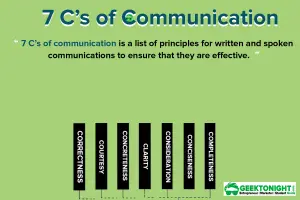
What is Report Writing? Parts, Types, Structure, Process
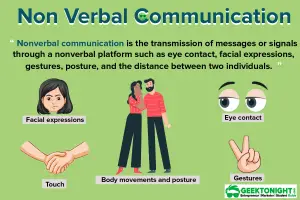
What is Interview? Types, Questions, Do’s and Don’ts, Preparing
What is negotiation importance, process, strategic model, learning skills.
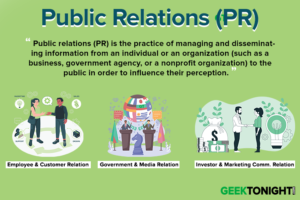

What is Public Relations? Definition, Tools, Function, Advantages, Process
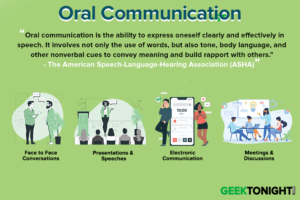
What is Oral Communication? Advantages, Disadvantages, Imp
Difference between upward and downward communication, leave a reply cancel reply.
You must be logged in to post a comment.
World's Best Online Courses at One Place
We’ve spent the time in finding, so you can spend your time in learning
Digital Marketing
Personal growth.

Development
Watch CBS News
4 Elements of a Powerful Presentation
By Dave Johnson
Updated on: March 10, 2010 / 11:53 AM EST / MoneyWatch
Here are four elements you should consider building into any visuals you bring into the conference room or auditorium.
Of course, no presentation has to include PowerPoint slides. You might choose to go solo, or use an alternative solution like the breathtaking, elegant Prezi . But Productivity 501 recently summarized four elements of a powerful presentation. Here are the highlights:
Focus the audience's attention . Your visuals should focus attention on what you're saying, not distract from it. Consider clean, minimalist slides with little clutter and simple backgrounds. Don't distract with animations, busy headers and footers, and other visual debris.
Be terse . Likewise, the fewer the words, the better. Use bullets, not paragraphs, and let the text compliment and summarize your points. Let the slides emphasize your main points -- they don't have to reiterate everything you're saying.
Use images smartly . A picture is worth a thousand words, so you can sometimes use an image to replace a slide full of text.
Anchor the audience in your presentation . If people don't know where you are and how much time is left, they can get frustrated and distracted. Keep the audience informed about where you are in the presentation. You can do that by showing an outline of your presentation up front, and then keeping everyone informed about where you are as you progress.
Of course, Rick suggests killing PowerPoint entirely .

View all articles by Dave Johnson on CBS MoneyWatch » Dave Johnson is editor of eHow Tech and author of three dozen books, including the best-selling How to Do Everything with Your Digital Camera . Dave has previously worked at Microsoft and has written about technology for a long list of magazines that include PC World and Wired .
More from CBS News
1.858.217.5144
Start your project
Four Elements of a Successful Presentation
elements of a successful presentation
Jun 17, 2014
What makes a successful presentation? When delivering a presentation, being a strong and confident speaker can help in engaging the audience.
The quality of your slides – the content and overall design – is another matter. You also have to consider other elements such as the venue and its effect on your delivery.
If it’s your first time to deliver a presentation, it’s okay to feel nervous. To help you overcome the jitters and ensure the success of your presentation, here are some tips that you may want to keep in mind:
Quality Content
Regardless of your topic, avoid making its scope too broad. Try to be specific by focusing on three or four important points. It would be great to tackle them in such a way that the first point flows logically to the next and so on.
Make sure that your information is clear and logical. Present what your audience is expecting to learn and stick to your agenda. In case they want to know more about your topic, they will ask for sure. Just be prepared for their questions, though.
Engaging Slide Design
Use appropriate colors when designing your slides. Avoid too many color combinations to maintain a clean and professional look.
The same goes for the text. Keep it to a minimum by aiming for one point for each slide. Be sure that the text is large enough to be read even by people at the back of the room.
To enhance readability, the slide’s background color and the text should have great contrast. Resist the urge to use fancy fonts. Plain and simple font types would do for better readability.
Don’t forget to use images. You can always use pictures or graphics to enhance your presentations, not to decorate the slides but to support your points. So make sure to use relevant and high-quality images.
Prepared Venue
When it comes to the venue, some variables can either enhance or reduce the impact of your presentation. If possible, visit the place in advance and check for the following:
Is the presentation going to be held indoors? Will it be in a hall or a boardroom? Will it be darkened? Is the room carpeted? Or will the sound bounce off bare floors, instead?
To further get the feel of the place and be more confident on the big day, you may want to rehearse your presentation in the actual venue.
Impressive Delivery
Your delivery can make or break your presentation. Make sure you have practiced your speech and the timing of your slides.
If possible, practice in front of a colleague and ask them to give genuine feedback. Recording your presentation using the record function in PowerPoint is also a great idea.
It can help you hear how you actually sound. If you notice anything off with your pitch or enunciation, make the necessary adjustments.
Other popular articles

The Benefits of Visualizing a ‘Sales Distribution Strategy’ Slide
December 16, 2024

Can Customer Journey Maps Influence Investor Decision-Making?
December 15, 2024

The Need to Visualize a ‘Cost-Benefit Analysis’ Slide
December 14, 2024

The Right Ways to Use Clustered Column Charts in a ‘Competitor’ Slide
December 13, 2024
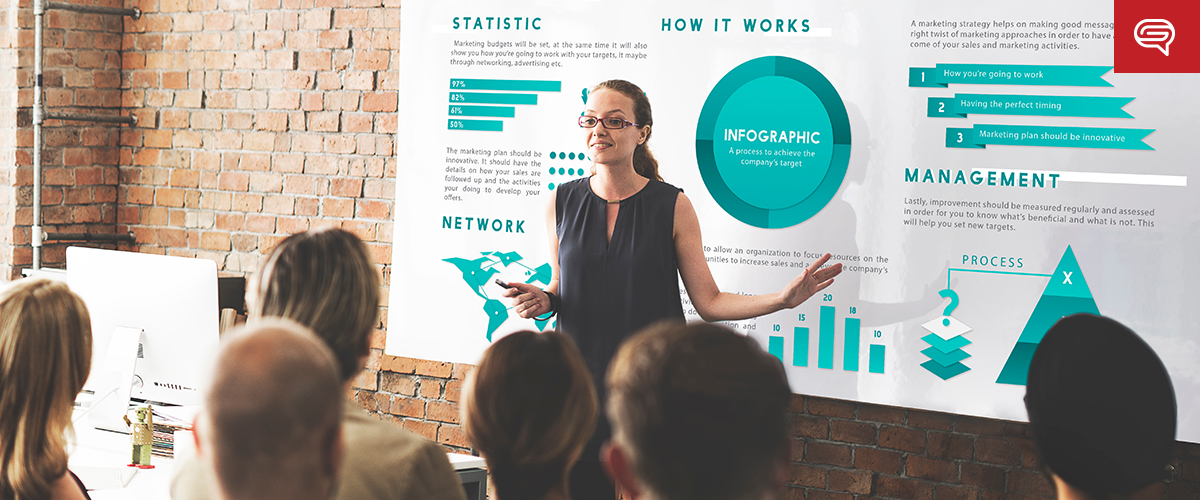
Do Bullet Points in a ‘Solution’ Slide Actually Work?
December 12, 2024

When to Use Scatter Plots Charts in Presentations
December 11, 2024
24×7 Design Services
- Stand With Ukraine
- Management Team
- Softjourn Story
- Events & Conferences
- Client Testimonials
- Corporate Social Responsibility
- Media & Entertainment
- Technologies
- Base Products
- Venue Mapping Tool
- Case Studies
4 Keys to Great Presentation Design
Choose your content, understand your audience.
- ONE IDEA, ONE SLIDE
- CUT DOWN ON THE TEXT
- CLEAR IS MORE
- PROVIDE A MAP
- VISUALS, VISUALS, VISUALS
- CHOOSE A COLOR SCHEME
- USE READABLE FONTS
- STICK WITH THE SAME LAYOUT
Cheat Sheet for a Good Presentation
Let’s wrap up.
Presentations are a great way to educate others about a new idea, or persuade an audience that your opinion is the right one. They are effective tools for communicating with large groups of people; it’s one thing to communicate your thoughts on a new project to your coworker, and quite another when you are talking to your whole department.
Seventy-four percent of respondents to the 2017 Annoying Presentation Survey stated that they were seeing about two presentations created in Microsoft’s PowerPoint per week. That’s roughly 104 presentations a year! How can a presenter ensure their audience retains the information they worked so hard to collect?

There are four keys that will help your audience follow along and remember your presentation: content , audience , structure , and consistency .
When developing a presentation, the first thing to do is decide on what you’re presenting. Choose a single subject; by focusing on a small amount of information, you won’t overwhelm your audience. This also gives them the time and opportunity to really understand the position or reasoning on why you are giving a presentation in the first place.
Start by creating a high-level outline that captures three main ideas about the topic you are presenting on. At this stage, you don’t have to get too into the weeds on what your presentation will include; just sketch out the idea and some supporting statements. This information can later inform what topics to include or ignore, visuals, and, in the end, how many slides you’re aiming for.
Do note that many people often say “less is more” when it comes to the number of slides in a presentation. There is an oft-cited myth that humans have a limited attention span thanks to technology—this is false! You will not lose your audience’s attention because they are unable to focus; you will lose their attention because you have a boring or confusing presentation.
By knowing your message, you’ll be able to create a powerful presentation that focuses on the essentials.
People change their way of speaking when talking with a child versus when talking with an adult. It’s the same in the workplace; you might be more informal with a coworker with whom you are close. Then you would speak another way with your boss or the company’s CEO.

Taking some time to think about how your audience will react to the information tells you how it should be presented. If your audience is brand new to the subject, you might want to take some time discussing background information. Let’s walk through an example: talking to a group of executives about web design . They will probably be unfamiliar with UI/UX, back end versus front end, or what a server is. Educating them about these terms can help support an argument that spending more time on the UX will result in more sales simply because your audience understands you.
If you were to give the same presentation to a group of web designers, you’ll probably bore them to death, and instantly have all eyes dropping to phone screens the moment you reveal your cover slide. Understanding your audience will tell you what areas are of most importance and should have some of your valuable presentation time. It will also tell you what is unimportant and should not be included in a presentation.
Develop the structure
Once you know the what and how, you can plan out your presentation. This is where you decide what content will go on each slide, in what order. Some good rules of thumb:
One idea, one slide
Keep the content of each slide focused on a single idea that supports the subject you’re discussing. This information should be straightforward and easily summarized by a visual. More information has the potential to easily become too much text, which can become a problem of its own. One big complaint mentioned in the 2017 Annoying Presentation Survey was that presenters often ended up simply reading their own slides. When that happens, you know the presentation should have been an email.
Cut down on the text
Continuing the same thought from above, less text means there’s less of a chance that your audience will become overwhelmed and mentally check out, constantly looking at their watch for when your presentation will end. Trying to include too many thoughts on one slide is the fastest way to intimidate and scare away your audience. Keep it simple, and keep it focused.
Clear is more
As we said before, don’t concentrate on keeping the number of slides in your presentation to a minimum; use as many slides as are needed to fully explain the idea. A good rule to work by is one slide per minute you have to present in; so if you have 30 minutes, use 30 slides. The important thing to focus on is ensuring your slides themselves do not overwhelm the audience with content.
Provide a map
One great way to keep your audience focused on your presentation is to tell them where you all are within the presentation. This can be done with slides that are structured like a document’s table of contents, or a high-level agenda. They can be placed between sections to show what has come before, and what’s still to come; or they can be included in the design of the slides themselves, such as in a header or footer on the slide.

This way, if you do end up having a presentation with a lot of slides, your audience won’t be staring at the ceiling; they’ll be staring at your presentation, curious about where all of this is leading.
Visuals, visuals, visuals
You know that saying that a picture is worth a thousand words? It might be a cliché at this point, but that doesn’t make it any less true. Visuals can say a lot in just one glance that would otherwise take readers some time to understand. And when you know your topic, you can create really impactful visuals—whether using charts, icons, or graphics, you can bring your presentation to life and wow your audience with something beautiful to look at.
One such tool that can be extremely effective in creating striking visuals is an image background remover. This can be used to isolate the subject of a picture , thereby removing any distractions within the frame. By doing so, you simplify the image and draw attention to the part that truly matters. This can be particularly useful when you're trying to highlight or emphasize a certain point in your presentation.
Be consistent
One of the most important things in the presentation development process is creating a presentation theme that is consistent. When your slides vary in size, display, or structure, audiences can become confused or distracted, which means they’re not paying attention to your message. You can create a consistent theme by doing the following:
Choose a color scheme
Choosing a good color scheme might be one of the most important parts of developing a good presentation, right under understanding your content and your audience. Differing colors are a great way to draw your audience’s attention, and incite particular emotions when discussing different ideas. However, this doesn’t mean you should use whatever color strikes your fancy all at the same time. Choose a handful of colors for a particular and impactful color scheme.
Colors should be complementary, and draw the eye to particular parts of the screen that you want your audience to pay attention to. Choose your colors purposefully! And if the text will sit on top of a particular color, ensure that the two don’t cancel each other out. You want colors that work together that still allow text to be read and ideas understood.
Use readable fonts
Picking a great font is very important; aside from visuals, text is the other way you’re going to get your message across. There are two types of fonts: serif and sans-serif. Serif fonts have small, decorative flourishes, whereas the sans-serif fonts do not (thus, “sans” serif, or without).
Choose a font family that is easy to read; san-serif fonts are typically easier to read when it comes to presentations and digital content because of the dots per inch (DPI). Printed works have 300 DPI, whereas computer monitors typically have 100 DPI. This makes serif characters more difficult to read because of their complex shape.
Sans serif font:
The Quick Brown Fox Jumps Over The Lazy Dog
Serif font:
The Quick Brown Fox Jumps Over The Lazy Dog
Some of the most popular sans-serif fonts are Helvetica, Verdana, and Arial.
Stick with the same layout
The way content is structured on a page is often called a grid, frame, or layout. When developing your presentation, it’s good to use consistent layouts for the same kind of slides. For example, use one type of layout for the cover slide; keep all section intro slides consistent; and all content slides consistent. This way, your audience knows where to look, what information is important, and can follow along easily as you present. If your audience is constantly searching for pertinent information on the slide in front of them, that means they’re not listening to you talk!
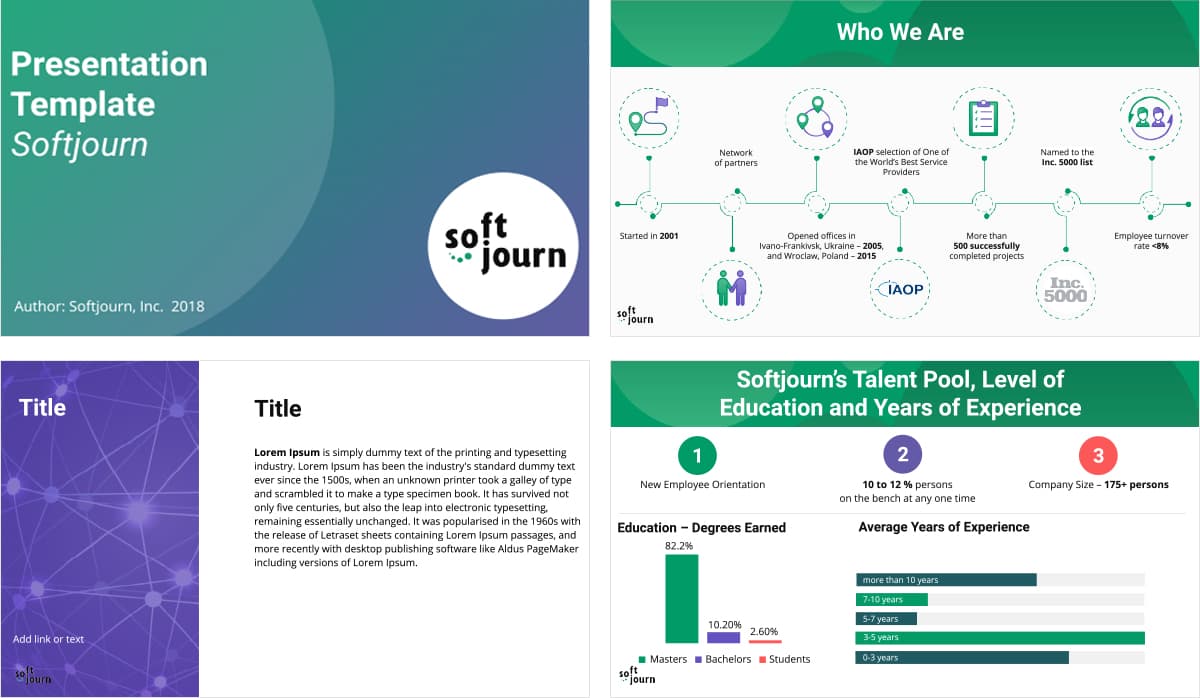
Creating a compelling and engaging presentation requires careful planning and design. To assist in this process, we've compiled a "cheat sheet" for good presentation design, which includes three essential tables.
The first table outlines the ideal content structure, from the introduction to the conclusion, ensuring your narrative is clear and engaging.
The second table emphasizes the presentation skills that every presenter should hone, such as clarity, confidence, and time management.
Lastly, the third table offers guidance on visual elements, such as slide design, use of images, and font and color choices. Utilizing this cheat sheet will help guide your presentation design, helping you create a visually appealing, well-structured, and engaging presentation that effectively communicates your message.
Content Structure:
Presentation Skills:
Visual Elements:
As you can see, a lot of work goes into a good presentation. There are many factors to consider to ensure your message is being heard loud and clear. But don’t feel overwhelmed! Most of these steps build on one another, like how picking one topic to focus on and understanding your audience tells you how to structure and present your material.
Once you’ve got it all together, the best thing to do is go through the material with a dry run. By practicing, you’re making sure that you’re not missing any gaps or have accidentally left in any unnecessary material. It also makes sure that you know your presentation; this helps you avoid reading off the slides, and can help abate presentation anxiety.
Making a presentation is more than just slapping a few slides together, but with Softjourn’s tips about presentation structure and design, you too can create a stellar presentation. Let us know in the comments which you found most helpful, or add your own ideas!

Enjoyed the article?
Partnership & recognition, want to know more.
Fill out your contact information so we can call you
4 Essential Elements of Effective Presentations
A well-designed and executed presentation may facilitate the effective transmission of ideas and thoughts. Content that is delivered effectively helps in the accomplishment of goals and important outcomes.
Compiling and delivering presentations effectively is an essential soft skill for most executives nowadays. This may result in several advantages for both the presenter and the audience.
The 4 components listed below should be included into every efficient presentation-making process.
The first 3 components, i.e. Plan, Prepare, and Practice are interconnected and overlap throughout the procedure. The 'Present' element stands alone and is only feasible after the completion of the first 3 parts.
The first 3 pieces may be organized either in parallel or sequential fashion. The sequential method comprises completing one job before going on to the next, and so on. A parallel method involves working on many projects simultaneously, completing what can be completed at once.
Both strategies are equally effective so long as they reflect the following characteristics of the creators:
- Partialities
Let us go a bit more into the specifics of the 4 presentational aspects.
Planning a presentation requires in-depth consideration of its essential components in advance. Planning requires consideration to the following 7 dimensions:
- Organization
Planning systematically using the 7 dimensions allows for the detection of gaps in the created concepts.
Planning also aids in providing structure to the presentation, allowing the audience to simply follow along and stay involved.
Planning in advance facilitates practicing the presentation, which in turn improves confidence; a confident presenter can persuade the audience much more effectively.
Using an excellent slide structure is the most essential part of the Preparation phase. Well-designed slides aid in engaging the audience and reinforcing crucial points.
The Consulting Presentation Framework, a slide framework used by every top-tier management consulting company and also utilized by FlevyPro, employs a layout in which each slide consists of 3 major elements:
Even if a presentation has previously been given elsewhere, it is still a good idea to practice it. Changes in environment and audience, as well as the passage of time between presentations, raises fresh difficulties.
Moreover, 2 facets of practice must be addressed:
Rehearse—this is the act of practicing what you want to accomplish.
Prehearse—this refers to preparation and practicing for potential tasks.
Successful presentations need not just quality material and a well-designed slide deck, but also a good way of conveying them. Everything about how a message is conveyed may impact how the audience perceives it, including body language, voice tone, tempo, and the usage of graphics.
Interested in learning more about 4 Ps of Effective Presentations? You can download an editable PowerPoint presentation on 4 Ps of Effective Presentations here on the Flevy documents marketplace .
Do You Find Value in This Framework?
You can download in-depth presentations on this and hundreds of similar business frameworks from the FlevyPro Library . FlevyPro is trusted and utilized by 1000s of management consultants and corporate executives.
For even more best practices available on Flevy, have a look at our top 100 lists:
- Top 100 Consulting Frameworks
- Top 100 in Strategy & Transformation
- Top 100 in Digital Transformation
- Top 100 in Operational Excellence
- Top 100 in Organization & Change
You need to be a member of Global Risk Community to add comments!
Join Global Risk Community
FEATURED BLOG POSTS
Press release: reuters events announces the future of insurance europe 2025 conference in amsterdam.
Protecht launches advanced controls management solution
Stay Ahead in GRC - Get Certified & Save with Exclusive Discounts!
Mastering risk management: a global perspective on minimizing workplace injuries, transforming your company with operational resilience.
The expanding scope of operational resilience regulatory requirements
Note: this page contains paid content..
Please, subscribe to get an access.
LATEST BLOG POSTS
Navigating ai ethics: insights from dan clarke.
The Ultimate Guide to Marketing Strategy for IT Business
Lithium-ion battery industry to surpass usd 172 billion by 2030, on growing adoption in plug-in vehicles.
Why Diversification Matters in Real Estate Investing
Managing Brand Transparency Without Compromising Digital Safety
The GlobalRisk Community is a thriving community of risk managers and associated service providers. Our purpose is to foster business, networking and educational explorations among members. Our goal is to be the worlds premier Risk forum and contribute to better understanding of the complex world of risk.
Useful Links
- Privacy policy
Business Partners
For companies wanting to create a greater visibility for their products and services among their prospects in the Risk market: Send your business partnership request by filling in the form here!
Hello, you need to enable JavaScript to use Global Risk Community.
Please check your browser settings or contact your system administrator.

- GET STARTED
- NEWS & INSIGHTS
- PREMIUM SERVICES
- EXPLORE RALI
- About Rialto
- Terms and Conditions
- Privacy Policy

Log on to your account
4 ps of effective presentations.

Effective presentations are an indispensable element of effective professional communication in today’s world.
A well-designed and well-delivered presentation can aid in transmitting ideas and messages more efficiently. Effectively presented content facilitates the achievement of objectives and key results .
Effective compilation and delivery of presentations is a critical skill for most executives these days. Doing so may generate quite a few benefits, both for the presenter and the audience.
The following 4 essential elements should be included in any effective presentation-making process.
The initial 3 elements—i.e. Plan, Prepare, and Practice—are interlinked and overlap in the process. The Present element stands alone and is possible only after the initial 3 elements have been completed.
The first 3 elements can be structured in either parallel or sequential order. The serial approach entails working on a single task until it is completed, then moving on to the next task, and so on.
A parallel approach consists of working on a number of tasks at the same time, accomplishing what can be achieved at a time.
Both methods work the same way, as long as the method used is in line with the following traits of the people who made it:
- Partialities
Let us delve a little deeper into the details of the 4 elements of presentation.
Planning a presentation entails pondering beforehand regarding significant parts of it. Planning involves the following 7 dimensions that need attention:
- Organization
Planning, methodically, using the 7 factors enables the identification of gaps in the ideas generated.
Planning also helps give structure to the presentation, which enables the audience to follow it easily and remain engaged.
Planning ahead enables rehearsing the presentation’s delivery which in turn boosts confidence—a confident presenter is able to convince the audience much better.
The most important aspect of the Preparing phase is the use of an effective slide structure. Slides that are well-designed help to engage the audience and reinforce key messages.
The Consulting Presentation Framework—a slide structure that every top-tier management consulting firm follows, also used by FlevyPro —uses a structure in which every slide has 3 primary components:
Practicing a presentation is always a good idea, even if the presenter has already delivered it somewhere else. A change of setting and audience, as well as the time lapse between presentations, brings up new challenges.
Practicing also has 2 aspects that need to be addressed:
- Rehearse – This is practicing the things you intend to do.
- Prehearse – This is practicing and planning for the things you might have to do.
Effective presentations are not only about having good content or a well-designed slide deck; the way information is presented can be just as important. From body language and voice tone to pace and the use of visuals, everything about how the message is delivered can affect how the audience sees it.
Interested in learning more about 4 Ps of Effective Presentations? You can download an editable PowerPoint presentation on 4 Ps of Effective Presentations here on the Flevy documents marketplace .
Do You Find Value in This Framework?
You can download in-depth presentations on this and hundreds of similar business frameworks from the FlevyPro Library . FlevyPro is trusted and utilized by 1000s of management consultants and corporate executives.
For even more best practices available on Flevy, have a look at our top 100 lists:
- Top 100 Consulting Frameworks
- Top 100 in Strategy & Transformation
- Top 100 in Digital Transformation
- Top 100 in Operational Excellence
- Top 100 in Organization & Change


IMAGES
COMMENTS
A key path to improving your presentation skills. One great exercise to help you develop your skills as a speaker is to assess other speakers you see in terms of these 4 elements. Whether you are watching a TED talk, a colleague, or an actor, pay close attention to each of the elements.
The difference is in mastering these elements. By focusing on the Key Elements of Presentation, you can elevate your delivery. Dive into this blog to discover the strategies that will help you make a lasting impression on your audience. Table of Contents . 1) Importance of a Good Presentation . 2) Key Elements of a Captivating Presentation
An engaging start to your presentation helps you quickly build rapport and connect with your audience's emotions. A hook to begin your presentation may include a surprising statistic or fact, interesting quotation, relevant question, joke or story. Whatever hook you choose, it's important to ensure that it clearly connects to your content. 4.
What we've learned is about building a GREAT presentation isn't easy, but it can be broken down into 4 understandable elements. And once you understand the elements, the building becomes a lot easier. The 4 Keys to GREAT Presentations: Content: Every presentation needs to start with the right content. First, have a clear message.
Main Elements of Presentation. A presentation is said to be effective if it has three main elements, which are as follows: Specific content: This refers to the information that a presentation will comprise. The information must be conveyed effectively so that it is absorbed by the audience in one sitting. It should be relevant and meaningful to ...
But Productivity 501 recently summarized four elements of a powerful presentation. Here are the highlights: Here are the highlights: Focus the audience's attention .
What makes a successful presentation? When delivering a presentation, being a strong and confident speaker can help in engaging the audience. The quality of your slides - the content and overall design - is another matter. You also have to consider other elements such as the venue and its effect on your delivery.
Discover the 4 crucial elements of outstanding presentation design and learn how to captivate your audience with a visually stunning display. Presentations are a great way to educate others about a new idea, or persuade an audience that your opinion is the right one. ... The key ideas you want to convey: Supporting Evidence: Data, anecdotes, or ...
The Consulting Presentation Framework, a slide framework used by every top-tier management consulting company and also utilized by FlevyPro, employs a layout in which each slide consists of 3 major elements: Headline; Body; Bumper; Practicing. Even if a presentation has previously been given elsewhere, it is still a good idea to practice it.
Effective presentations are an indispensable element of effective professional communication in today's world. A well-designed and well-delivered presentation can aid in transmitting ideas and messages more efficiently. Effectively presented content facilitates the achievement of objectives and key results. Effective compilation and delivery of presentations is a critical skill for most ...